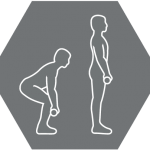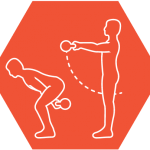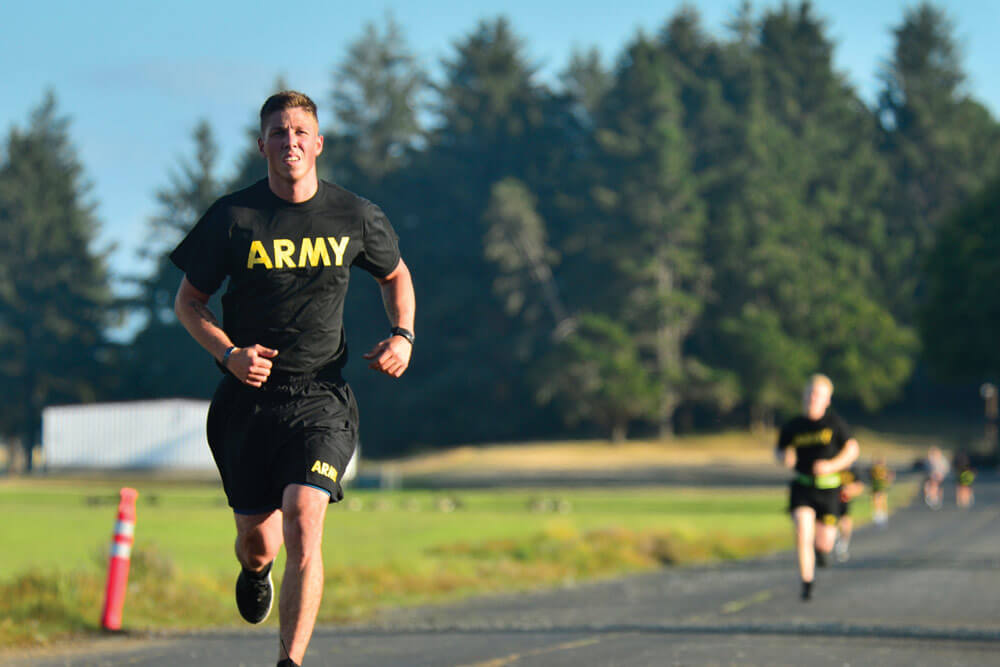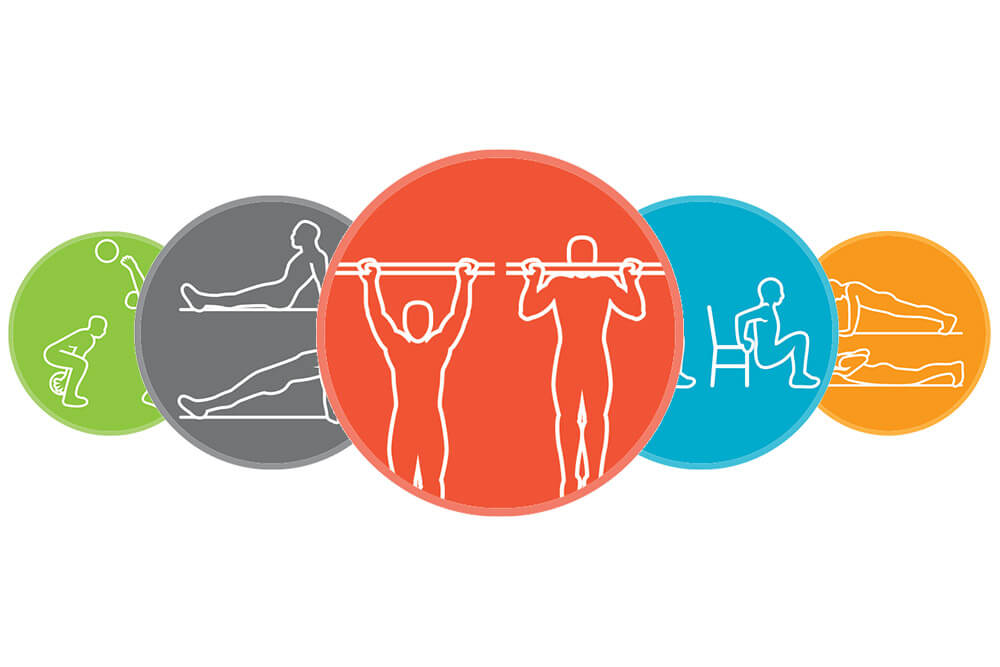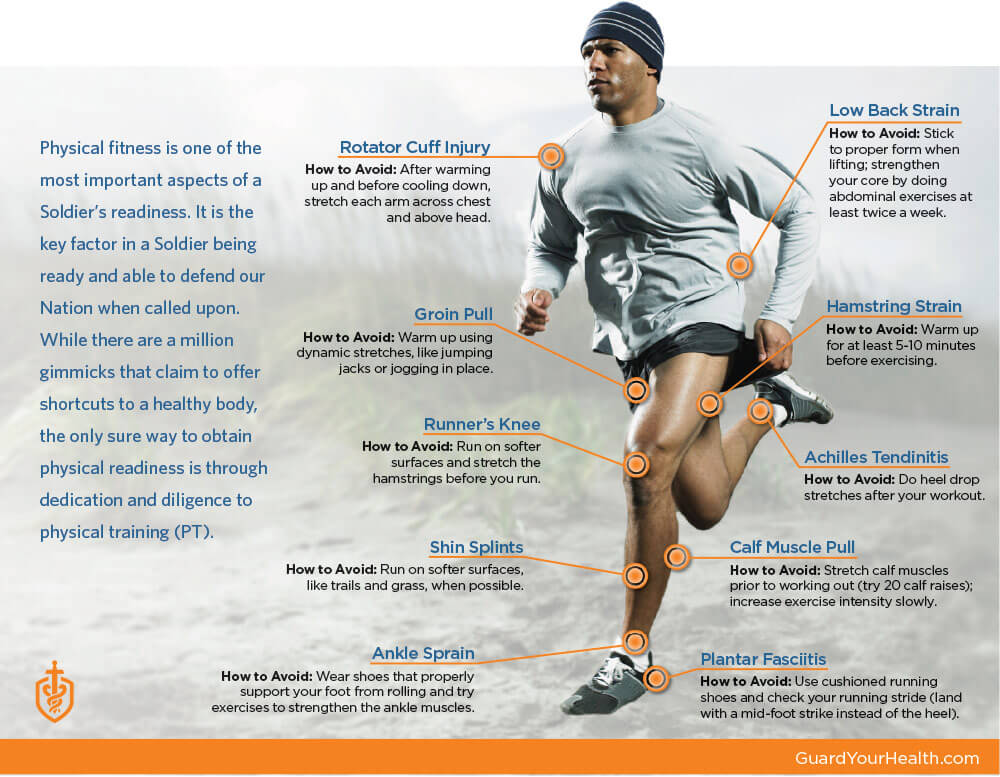Without a doubt, one thing Soldiers are sure to do is a lot of walking. To protect the body from potential injuries that result from prolonged walking and other related activities, a solid lower body workout plan is essential. The lower body acts as the base of support as you walk, run and jump. Regular lower body exercise increases bone strength, improves balance and stamina, decreases the odds of injury to knees and hips and reduces the risk of falling.
As a follow-up to the upper body workout plan shared last issue, power up with these lower body exercises during your next workout.
SQUATS: As many as possible in 2 minutes
- Stand straight with your feet hip-width apart.
- Lower your body by pushing your hips back and bending your knees, sinking into your heels without bending the knees past the toes.
- While lowering your body, raise the arms forward and above the head, keeping the spine straight.
- Pause.
- Lift up and return to the starting position, then repeat.
DEADLIFT: 3 reps in 5 minutes
- Stand with feet hip-width apart, knees slightly bent and a weight by each foot (or a single bar in front of both feet).
- Hinge at the hips with a slight bend in the knees to lower your body.
- Grab each weight with your arms kept straight.
- Push the buttocks out while keeping the back flat. Your torso should be almost parallel to the floor.
- Keeping your core tight, push through the heels to stand up straight, keeping the weights close to the shins while pulling up.
- Pause at the top, squeeze the buttocks then slowly lower the weight along the shins.
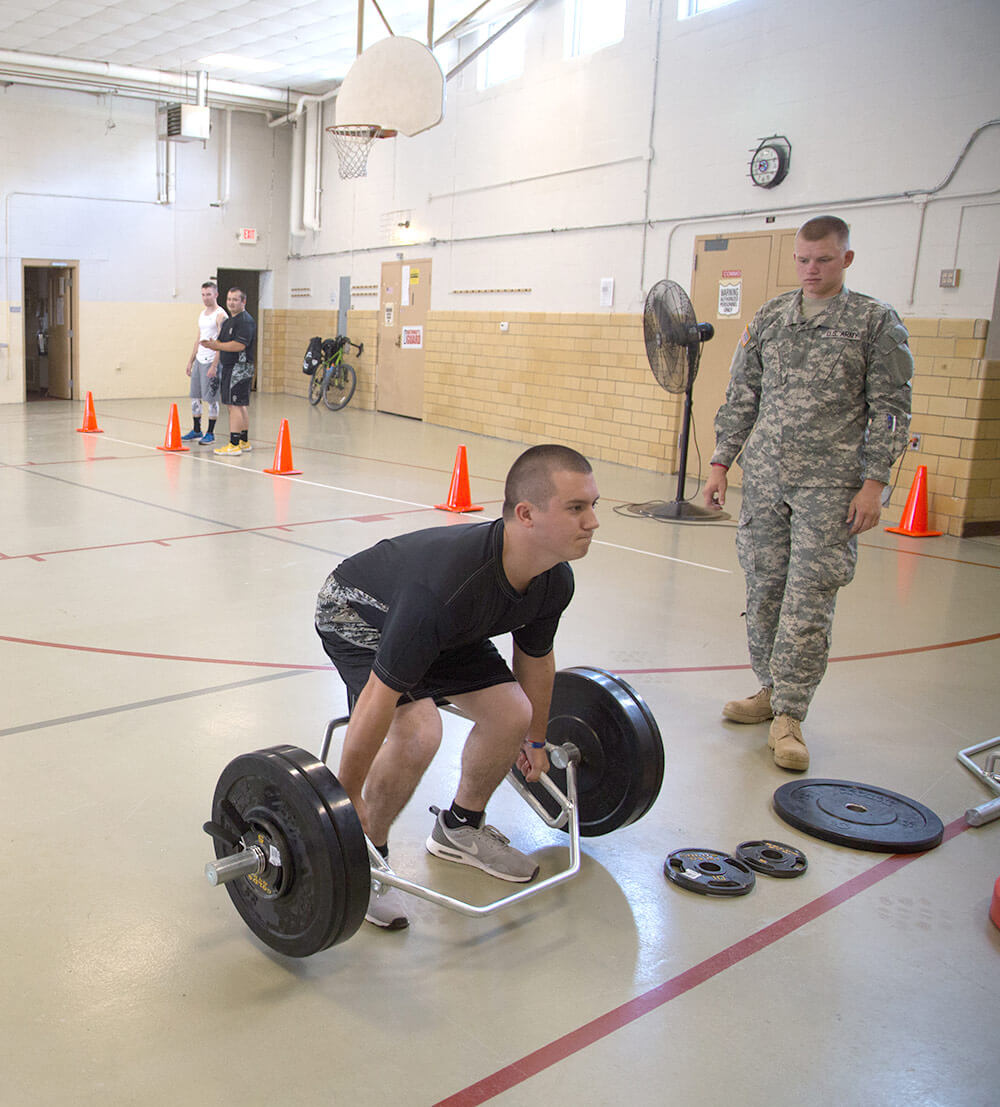
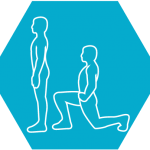
LUNGES: As many as possible in 2 minutes
- Step forward with one leg.
- Lower hips until both knees are at a 90-degree angle.
- Be sure the front knee is directly above the ankle and the back knee is not touching the ground.
- Push up through the thighs and hips to return to the starting position.
- Switch legs and repeat.
KETTLEBELL SWING: 10 sets of 10 reps with 1-minute rest between
- Stand with feet shoulder-width apart with a kettlebell about a foot in front of you on the ground.
- Bend at the waist and grasp the kettlebell handle with both hands, keeping the palms facing the body and the torso nearly parallel to the ground.
- Pull the shoulders down and back, bracing the core before beginning to swing.
- Lift the kettlebell and swing it between your legs, keeping both knees slightly bent, the back flat and neck straight.
- Forcefully drive the hips forward to propel the kettlebell forward and up.
- Control the kettlebell’s momentum, without pulling it up and without allowing it to swing higher than the shoulders.
- Allow the kettlebell to swing back down and back through the legs, continuing to control the momentum by keeping the core engaged. Progress to the next rep in a single, fluid motion.
WALL SIT: Hold for 1 minute
- Press your back against a wall
- Spread the feet shoulder-width apart, about 2 feet in front of you.
- Slide down the wall until the knees are bent at a 90-degree angle.
- Keep the shoulders, upper back and the back of head against the wall.
- Keep both feet flat on the ground.
- Hold the position for 1 minute.
- Return to the starting position.
BY STAFF WRITER Ruth Ann Replogle


